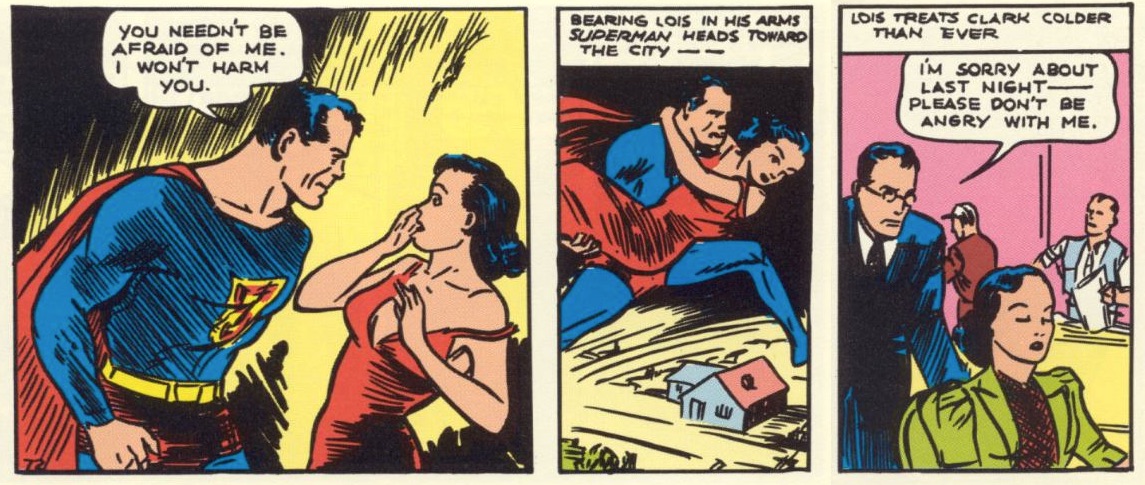Click here and press the right key for the next slide (or swipe left)
(This may not work on mobile or ipad. You can try using chrome or firefox, but even that may fail. Sorry.)
(If the slides don’t work, you can still use any direct links to recordings.)
also ...
Press the left key to go backwards (or swipe right)
Press n to toggle whether notes are shown (or add '?notes' to the url before the #)
Press m or double tap to slide thumbnails (menu)
Press ? at any time to show the keyboard shortcuts
Lecture 13:
Mind & Reality
\def \ititle {Lecture 13}
\def \isubtitle {Mind & Reality}
\begin{center}
{\Large
\textbf{\ititle}: \isubtitle
}
\iemail %
\end{center}

Personal Identity: The Question
\section{Personal Identity: The Question}
\emph{Reading:} §Olson, E. T. (2019). Personal Identity. In Zalta, E. N., editor, The Stanford Encyclopedia of Philosophy. Metaphysics Research Lab, Stanford University, fall 2019 edition.
Theme
What is metaphysically necessary
for your survival?
chocolate
Note that our question is not equivalent to one about what it takes
for you to continue as a new person.
‘I am a different person now’
The way this is put implies that you continue to exist; (it’s you, not
someone else, who has become a different person).
[Olson’s formulation] If a person exists at one time and something exists at another time,
under what possible circumstances is it the case that the person is the thing?
Ok, let’s illustrate the question with two examples

Identifying persons is often easy ...
Easy case: some friends are looking through photos of a holiday they took together.
Ayesha says ‘that’s me’.
Omar suffers from a rare brain-destroying disease.
His sister Betty offers to donate her left brain hemisphere.
Omar’s brain is removed and Betty’s left hemisphere is implanted in his skull.
Does Omar continue to exist?
Omar suffers from a rare brain-destroying disease.
His sister Betty offers to have her brain wiped and re-programmed with Omar’s memories.
Betty’s brain is wiped and re-programmed; shortly after Omar’s original brain gives out altogether.
Does Omar continue to exist?
Theme
What is metaphysically necessary
for your survival?
chocolate
‘I am a different person now’
[Olson’s formulation] If a person exists at one time and something exists at another time, under what possible circumstances is it the case that the person is the thing?
/ex/TorF/qq/Omar suffers from a rare brain-destroying disease. His sister Betty offers to donate her left brain hemisphere. Omar’s brain is removed and Betty’s left hemisphere is implanted in his skull. Does Omar continue to exist?|Omar suffers from a rare brain-destroying disease. His sister Betty offers to have her brain wiped and re-programmed with Omar’s memories. Betty’s brain is wiped and re-programmed; shortly after Omar’s original brain gives out altogether. Does Omar continue to exist?|Everyone who thinks hard enough, and clearly enough, will give the same answers to the two questions above.
/ex/q/In the Betty-and-Omar scenarios described in the previous question, what considerations might justify the pattern of answers you gave?
\section{Numerical Identity}
\emph{Reading:} §Olson, E. T. (2019). Personal Identity. In Zalta, E. N., editor, The Stanford Encyclopedia of Philosophy. Metaphysics Research Lab, Stanford University, fall 2019 edition.
‘Few concepts have been the source of more
misunderstanding than identity over time. The Persistence Question is
often confused with other questions or stated in a tendentious way.’
Olson, 2019
\citep{olson:2019_personal}
Ok, so it’s important we understand the question and get it into clear focus. Good.
Let me remind you want the persistence question is ...
Theme
What is metaphysically necessary
for your survival?
chocolate
‘I am a different person now’
[Olson’s formulation] If a person exists at one time and something exists at another time, under what possible circumstances is it the case that the person is the thing?
To understand the question, we need to understand what this ‘is’ captures.
key distinction:
qualitative similarity vs numerical identity
another key distinction:
‘having an identity’ vs numerical identity
another key distinction:
‘having an identity’ vs numerical identity
Key distinction: numerical vs qualitative identity.
Siegel & Shuster, 1939 (Issue 1)
This person has two ‘identities’, Superman and Clark Kent.
In this sense, an ‘identity’ is something like a guise.
But numerically, there is only one person. (This is the point of the story, of course.)
Numerical identity is one of the simplest, clearest notions we have.
Don’t complicated it by trying to be clever.

Siegel & Shuster, 1939 (Issue 1)
Numerical ‘Identity is utterly simple and unproblematic.
Everything is identical to
itself; nothing is ever identical to anything else except itself.
There is
never any problem about what makes something identical to itself;
nothing can ever fail to be.
And there is never any problem about what makes two things identical;
two things never can be identical’
\citep[pp.~192--3]{Lewis:1986zq}.
‘Identity is utterly simple and unproblematic.
Everything is identical to
itself; nothing is ever identical to anything else except itself.
There is
never any problem about what makes something identical to itself;
nothing can ever fail to be.
And there is never any problem about what makes two things identical;
two things never can be identical.’
Lewis, 1989 pp. 192--3
Theme
What is metaphysically necessary
for your survival?
chocolate
‘I am a different person now’
[Olson’s formulation] If a person exists at one time and something exists at another time, under what possible circumstances is it the case that the person is the thing?
/ex/TorF/qq/Omar suffers from a rare brain-destroying disease. His sister Betty offers to donate her left brain hemisphere. Omar’s brain is removed and Betty’s left hemisphere is implanted in his skull. Does Omar continue to exist?|Omar suffers from a rare brain-destroying disease. His sister Betty offers to have her brain wiped and re-programmed with Omar’s memories and learnt associations. Betty’s brain is wiped and re-programmed; shortly after Omar’s brain gives out altogether. Does Omar continue to exist?
\section{Psychological Continuity}
\emph{Reading:} §Parfit, D. (1984). Reasons and Persons. Clarendon Press, Oxford.
[Olson’s formulation] If a person exists at one time and something exists at another time,
under what possible circumstances is it the case that the person is the thing?
Answer 1: psychological continuity
Necessarily, a person existing at one time is a person existing at another time if and only if the first mentioned person can, at the first time, remember an experience the second mentioned person has at the second time, or vice versa.
Could be some deeper notion of psychological continuity.
Think, for example, of the way emotions unfold.
\emph{The Psychological Criterion of Personal Identity}:
$X$ at $t1$ is the same person as $Y$ at $t2$ if and only if $X$ is uniquely
psychologically continuous with Y, where psychological continuity consists
in overlapping chains of strong psychological connectedness, itself
consisting in significant numbers of direct psychological connections like
memories, intentions, beliefs/goals/desires, and similarity of character
(Parfit 1984, 207)
further issue ... transitive closure needed

further issue ... transitive closure needed
ask your logic teachers

further issue ... transitive closure needed
ask your logic teachers
[Olson’s formulation] If a person exists at one time and something exists at another time,
under what possible circumstances is it the case that the person is the thing?
Answer 1: psychological continuity
Necessarily, a person existing at one time is a person existing at another time if and only if the first mentioned person can, at the first time, remember an experience the second mentioned person has at the second time, or vice versa.
Two lines of objection to Psychological Continuity:
\begin{itemize}
\item You were an embryo.
\item You can be psychologically continuous with more than one individual [not covered in this lecture].
\end{itemize}

What’s good about psychological continuity views?
That they allow us to make sense of the possibility of
people swapping bodies.

Three inconsistent claims
1. Sam is a person; Sam was an embryo; unless she recovers, Sam will be in a PVS.
2. Person essentialism is true.
3. Necessarily, a person existing at one time is a person existing at another time if and only if the first mentioned person can, at the first time, remember an experience the second mentioned person has at the second time, or vice versa.
Can you articulate why these two claims are not in fact inconsistent?
(This is the core of the seminar task)

\emph{Person Essentialism} is the view that being a person is an essential property.
(Contrast nonessential properties, like being the
wearer of the most fly shoes.)
This is Hannah with Annabel.
According to Hannah, Annabel is a person so we can’t eat her.
To get around this, I encouraged her to think that Annabel might
come back to us as a mango.
(Unfotunately when we went shopping, the person in front of us
took Annabel-mango before we could get there.)
In Hannah’s world, Butternut squash is Annabel now but it wasn’t always.

Hannah’s view
The butternut squash wasn’t always Annabel or any other person, and it won’t be Annabel (nor any person) later when I cook it.
This butternut squash, which is now Annabel, is identical with a seed.
The seed was never Annabel, nor any person.
Steve’s view
Hannah is a person essentially: being a person is not an attribute she could gain or lose without ceasing to exist altogether.
This person, Hannah, was once an embryo.
The embryo was a person.
Have I shown that
person essentialism
is true? No!
I just want you to understand what it is.
So what are you
trying to show?
What I am about to argue ...
Eventually, that
psychological continuity views
of personal identity
presuppose personal essentialism.
Without person essentialism, the Psychological Criterion would not
be a criterion of identity after all.
Inconsistent Triad:
\begin{enumerate}
\item Sam is a person; Sam was an embryo; unless she recovers, Sam will be in a PVS.
\item Person essentialism is true.
\item
Necessarily, a person
existing at one time is a
person
existing at
another time if and only if the first mentioned person can, at the first time,
remember an experience the second mentioned person has at the second time, or vice versa.
\end{enumerate}
Three inconsistent claims
1. Sam is a person; Sam was an embryo; unless she recovers, Sam will be in a PVS.
2. Person essentialism is true.
3. Necessarily, a person existing at one time is a person existing at another time if and only if the first mentioned person can, at the first time, remember an experience the second mentioned person has at the second time, or vice versa.
Two lines of objection to psychological continuity views
You were an embryo.
You can be psychologically continuous with more than one individual.
Not covered here, might cover later.
(Interesting this is that Parfit goes all ‘Relation R’; it’s what we care about,
but not identity, on us.)
This is the one we just covered.
/ex/TorF/qq/Person essentialism is the view that everything is essentially a person.|Person essentialism is the view that the essence of a thing is the person.|Person essentialism is the view that anything which is a person could not ever not be a person.|Person essentialism is the view that if you are a person now, you can never stop being a person.










